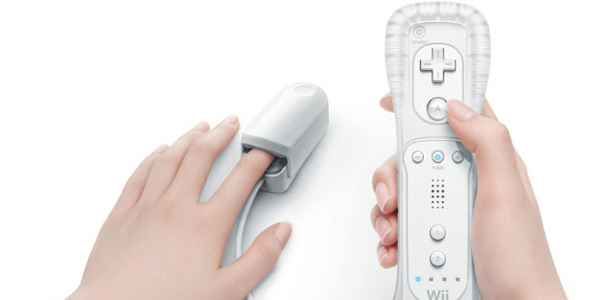
Five years ago, Nintendo announced an interesting peripheral called the Wii Vitality Sensor. This device, which fit over the user's fingertip and measured their pulse and level of relaxation, was never released to stores. In a new question-and-answer session with investors, Nintendo president Satoru Iwata explained why the device was shelved.
"We pushed forward its development on the academic assumption that by observing the wave patterns of the human pulse, we could quantify how tense or relaxed a person is, or to be more specific, how much the sympathetic and parasympathetic nerves work as functions of the autonomic nerve," Iwata said in the Q&A. "However, after a large-scale test of a prototype inside the company, we found out that for some people the sensor did not work as expected. We wondered if we should commercialize a product which works as expected for 90 people out of 100, but not so for the other 10 people."
Iwata continued by saying that the Vitality Sensor was an "interesting" device. Nintendo performed experiments with the sensor in conjunction with video games but didn't provide any specifics. When the device was first announced, Nintendo said that it could be used to measure how scared a player is in a horror game. Alternately, it could be used to help a gamer learn to relax in order to improve their life.
I remember being very skeptical of the Vitality Sensor back in 2009. The proposed applications seem interesting; Lord knows we could all use a device that helps us relax. However, I couldn't imagine many developers supporting it. The sensor's very specialized applications seemed like it would doom it to obscurity. It's not hard to imagine it in a "Top 10 Worst Gaming Peripherals" alongside the Power Glove and R.O.B.
However, the Sensor's narrow use doesn't seem to be a reason that Nintendo axed it. Iwata suggests that if they could make the device more reliable, they'd release it.
"We would like to launch it into the market if technology advancements enable 999 of 1,000 people to use it without any problems, not only 90 out of 100 people. I actually think that it must be 1,000 of 1,000 people, but (since we use the living body signal with individual differences) it is a little bit of a stretch to make it applicable to every single person."
I can't imagine that this Vitality Sensor will be a high priority for the company in the future but hey, who knows. Nintendo loves their wacky peripherals.
Your Daily Blend of Entertainment News
Staff Writer at CinemaBlend.

